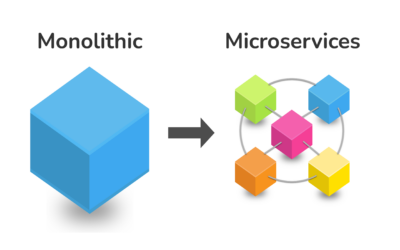Table of Content
The cloud services market is experiencing robust growth driven by the increasing adoption of cloud technologies, AI, digital transformation initiatives, and the need for scalable, resilient IT infrastructures.
Cloud services represent a uniquely dynamic category that has not only experienced explosive growth but also offers considerable profit potential and strong opportunities by stimulating the development of innovative services in AI, cybersecurity, data center optimization, and advanced cloud infrastructure design.
A multicloud strategy refers to the deliberate use of two or more public cloud providers—such as AWS, Microsoft Azure, Google Cloud Platform, and others—to build, deploy, and manage applications. This approach enables organizations to tailor their cloud environments to their workloads’ specific requirements by leveraging each platform’s unique strengths.
Ongoing cloud migration and rapid technological advancements—particularly in AI—demand ever-larger computational power and more sophisticated cloud infrastructures.
Since cloud services play a critical role in providing compute resources (CPU, GPU, TPU) required for AI workloads, relying on a single provider can create risks (e.g., lock-in, outages, compliance limits) it’s necessary to evaluate multi-cloud strategies to keep the organization flexible to adopt new tools and business models–the purpose of this blog post.
What is Multicloud?
Multicloud is a cloud computing strategy in which an organization leverages cloud services from two or more distinct cloud providers to run its applications and manage its IT infrastructure.
A multi-cloud strategy utilizes multiple cloud providers for different business functions.
Rather than relying on a single vendor, a multi-cloud approach enables companies to select the best services from providers such as AWS, Microsoft Azure, and Google Cloud to suit specific workload requirements.
This freedom of choice minimizes the risk of vendor lock-in. It allows enterprises to optimize aspects such as cost efficiency, performance, and compliance by exploiting each platform’s unique strengths.
Moreover, by integrating different multiple public clouds, and in some cases, private clouds (hybrid scenarios), multi-cloud strategies offer the flexibility to balance workloads according to geographic needs and regulatory requirements, ensuring the potential for higher availability and resilience, when workloads are properly architected for redundancy.
In essence, multicloud provides a broader range of innovative services and technologies—from advanced AI and machine learning capabilities to robust cybersecurity and data analytics—and creates a flexible foundation that can adapt to changing business demands.
Benefits of Multicloud
Adopting a multicloud strategy brings a range of strategic and operational benefits to organizations, including the following key advantages:
- Avoidance of Vendor Lock‑In: Diversifying cloud providers decreases dependency on a single vendor, offering greater flexibility and negotiating power.
- Optimized Performance: Different cloud platforms offer specialized services and performance advantages; businesses can optimize workload performance by selecting best-suited services for each workload.
- Risk Management: Utilizing multiple providers can enhance resilience and redundancy, reducing single-provider dependency risks and mitigating service outages.
- Cost Efficiency: A multi‑cloud approach enables organizations to take advantage of competitive pricing differences, spot instances, and region-based cost variations across providers.
- Innovation: Access to a wider range of cutting-edge technologies and advanced services (such as AI, machine learning, and big data analytics) supports continuous innovation in digital transformation initiatives.
Multi-Cloud vs Hybrid Cloud
In a multi-cloud setup, the individual cloud platforms may operate independently and are not tightly integrated, though workloads can be orchestrated across them.
In contrast, a hybrid cloud combines a private cloud (or on-premises infrastructure) with one or more public clouds into a cohesive computing environment. The primary goal of a hybrid cloud is to enable seamless interoperability and data exchange between on-premises/private infrastructure and cloud resources. This integration helps organizations achieve greater control, enhanced security, and compliance—especially for sensitive workloads—while benefiting from public cloud services’ scalability and flexibility.
While both multi-cloud and hybrid cloud strategies provide increased flexibility and resilience, multi-cloud is primarily about diversifying and optimizing cloud services across two or more public cloud providers (sometimes including private clouds in extended models), whereas hybrid cloud emphasizes the integration of private and public resources into a unified, cohesive environment.
Multi-Cloud Adoption
A Krasamo cloud consultant helps craft a long-term multi-cloud strategy, establishing a clear, overarching vision that aligns cloud investments with the business’s long‑term goals while considering cost, performance, security, and regulatory requirements.
A clear, strategic plan for leveraging multiple clouds effectively means the organization intentionally designs and implements a coordinated approach to using different cloud services.
A multicloud strategy outlines specific business and technical objectives, identifies which workloads or applications best suit each cloud provider, and establishes governance, security, and integration practices.
In other words, instead of randomly ending up with services from several providers, the organization proactively selects and integrates cloud resources to maximize benefits like performance, flexibility, cost savings, and innovation while minimizing operational complexity, governance challenges, and security risks.
Cloud consultants provide practical recommendations, including criteria for vendor selection (e.g., latency, compliance, cost models, ecosystem support), ensuring interoperability, establishing a unified governance framework, and investing in skill development, cross-cloud monitoring/management platforms, and automation/orchestration tools (e.g., Terraform, Kubernetes, service meshes) to streamline operations.
It’s important to invest in building cloud-agnostic internal skills, implement training programs, or partner with a cloud consulting company to bridge skill gaps and ensure that teams are well-equipped to manage a multi‑cloud environment.
Challenges of Multicloud Environments
Cloud consultants can also help organizations overcome the following challenges of multicloud:
- Complexity in Managing Multiple Vendors
Each cloud provider comes with its own set of interfaces, APIs, SLAs and pricing models, and management tools. This variability can lead to operational fragmentation, where IT teams struggle to oversee and control multiple environments. Maintaining consistency across these disparate platforms becomes cumbersome and prone to errors without a unified management strategy.
- Governance and Security Challenges
Multi‑cloud deployments can complicate governance and security because each cloud enforces security, compliance, and IAM (identity and access management) differently. Ensuring consistent enforcement of data protection, access controls, and regulatory compliance across all platforms is difficult. The lack of standardized governance can lead to vulnerabilities, increased risk of data breaches, and difficulties in auditing and managing cloud resources.
- Integration and Interoperability Issues:
Integrating services across providers is difficult because of differences in APIs, networking models, and data formats. Data transfer (often incurring high egress fees) and latency between regions/providers can create performance bottlenecks and data silos.
- Standardize Processes and Automation:
Standardizing resource provisioning, deployment, and compliance checks—combined with automation/orchestration tools such as Terraform, Ansible, or Kubernetes operators—reduces manual errors and simplifies cross-cloud operations.
Multi Cloud Teams
Deploying a multi‑cloud strategy is a cross‑functional effort involving several key organizational roles. Partnering with a Cloud consulting and implementation partner provides specialized expertise, accelerates adoption, and reduces risks.
Cloud Architects:
- Responsible for architecture design, provider selection, workload placement, integration strategies, and overall blueprint
- Cloud architect consulting is vital.
Cloud Engineers:
- These are the hands-on implementers who translate the architect’s designs into reality.
- They implement designs by handling deployment, configuration, automation scripts, and ongoing maintenance.
DevOps Engineers:
- Focus on automation, CI/CD pipelines, IaC (Terraform, Pulumi), and cross-cloud orchestration to streamline lifecycle management.
IT Operations and Infrastructure Teams:
- Essential for day-to-day management, monitoring, provisioning, maintenance, and performance optimization.
Security Specialists:
- Critical for IAM harmonization across providers, encryption (in transit/at rest), regulatory compliance, vulnerability management, and incident response.
Application Development and Data Teams:
- Focus on building cloud-native/multi-cloud-ready apps (containerized, API-driven), migrating workloads, and ensuring interoperability.
- Data teams manage governance, cross-cloud pipelines, egress cost optimization, and latency-sensitive data flows.
Network Engineers:
- Design and manage hybrid/multi-cloud networking (VPNs, Direct Connect, ExpressRoute, interconnects), ensuring secure, low-latency connectivity.
Governance, Risk, and Compliance Professionals:
- Ensure all cloud environments adhere to regulatory requirements, industry standards, and internal policies.
- They manage risk assessments, compliance audits, and policy enforcement.
Project Managers/Program Managers:
- Oversee the planning, execution, and delivery of multi-cloud projects, ensuring they are completed on time and within budget.
Business Analysts:
- They translate business needs to technical requirements and help ensure that the cloud deployments are aligned with business goals.
Vendor Management:
- With multiple cloud vendors, someone must manage those contracts and relationships.
Avoid Cloud Sprawl
Operational sprawl refers to the fragmented and dispersed nature of managing multiple cloud environments when organizations adopt a multi‑cloud approach without a unified management strategy.
In other words, as enterprises begin to use services from various cloud providers, they often end up with a patchwork of different tools, dashboards, and processes for each environment. This lack of consolidation creates inefficiencies, complicates governance, and increases the risk of inconsistencies in security and performance.
Cloud consultants provide proper oversight and integration—such as by deploying centralized management platforms or adopting standardized practices— without which operational sprawl often leads to higher costs, decreased agility, and an overall reduction in the benefits that a well-implemented multi‑cloud strategy should deliver.
How Krasamo’s Cloud Consultants can Help
Krasamo’s Cloud Consultant can serve as your strategic partner in navigating the complexities of multicloud adoption. By leveraging deep industry expertise and cutting-edge technologies, our consultants work with you to develop a tailored, long-term cloud strategy that aligns with your business objectives.
Contact us today to transform your cloud strategy and unlock the full potential of multicloud solutions with Krasamo.












I appreciate the detailed breakdown of multi-cloud teams’ responsibilities. However, I’d argue that a cloud advisory services partner can streamline these roles and provide more comprehensive guidance on provider selection and workload placement.